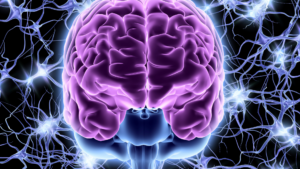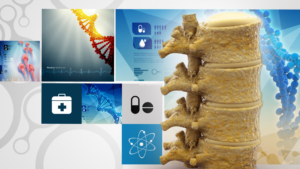Pain affects every aspect of your life, and normal daily activities are challenging when living with chronic pain. From the amount of sleep you get to the thoughts you have, pain can negatively affect your quality of life.
Your day-to-day activities are crucial in managing your pain and maintaining a healthier life. Positive changes to your routine and lifestyle are excellent ways to reduce pain and improve your mood.
Simple changes and additions to your daily life can make managing your pain easy.

Learn how to Manage Chronic Pain at Home
How to Manage Chronic Pain at Home
Deep Breathing or Meditation
Practicing relaxation skills such as breathing exercises, visual imagery, meditation, and mindfulness are some techniques that can help you center yourself and take your focus off the pain you experience.
Reducing Stress
Stress and Pain go hand-in-hand. When you are stressed, your body may react in different ways – such as tensing muscles – which can increase your pain. This can be prevented by reducing and managing your stress.
Stress can have a negative impact on your relationships, work ethic, eating habits, and mood. Keep a list of what stresses you out and consider how it affects your life. Once you have a list of stressors, think of ways you can minimize them or eliminate the triggers. For example, if you get stressed and feel rushed during the work week, brainstorm ways you can make the week easier by incorporating things like meal prep, picking out your outfit the night before, or other ways to make the week go more smoothly.
Stay Active
If you struggle from pain, exercise may provide the relief you are looking for. Cardio exercises use large muscle groups and raise your heartrate, which releases endorphins – you body’s natural painkillers. Exercising for 30-45 minutes of low-intensity aerobic exercise is recommended and can help relieve pain.
Talking with your doctor before starting any new exercise program is important.
Get More Sleep
It is no secret that pain can interfere with a good night’s sleep. You may have issues falling asleep or staying asleep throughout the night. Medications can cause sleep issues, too. If your pain medication causes drowsiness and fatigue, you may be more inclined to sleep during the day instead of at night. Getting a proper amount of sleep at night is important to how your body copes with pain and how your body boosts your energy levels.
Here are some ways to sleep better:
- Practice Relaxation: Write in a journal, listen to soothing music, or practice deep breathing techniques to help prepare your body for restful sleep.
- Set a Schedule: Routine sleeping can help you get better sleep. Go to bed at the same time and set an alarm for the same time each day.
- Be Mindful of What You Eat and Drink: Caffeine and alcohol can affect sleep patterns, as well as heavy meals. If you need a snack before bed, try almond butter on toast, crackers and cheese, or nuts and fruit.
Managing your pain at home is achievable when you have the support of a comprehensive care physician. Get the help you need from the team at Progressive Pain Management by filling out the form below.
There is an ever-growing variety of treatments for those suffering from chronic pain. There is the option of general medicine – oral and topical therapies – that can be used to reduce pain and inflammation. Your doctor may suggest non-medication pain relievers or even use alternative methods like acupuncture.
Physicians will occasionally use interventional techniques involving outpatient procedures or injections of various levels to treat pain. With the recent growth of research, knowledge, and game-changing technology, the amount of treatment options keeps increasing. But not only that, reliable, effective, and safe techniques can be used to manage pain.

Common Treatment Options for Pain
Common Treatment Options to Relieve Chronic Pain
- Exercise
Although rest alleviates pain, too much rest can actually increase pain and increase your risk of further injury. Stay active to help relieve pain from common conditions such as lower back pain, arthritis, and fibromyalgia. Exercise releases endorphins – the body’s natural painkiller – so as you exercise, you are helping your body diminish pain and build strength.
2. TENS
TENS (transcutaneous electrical nerve stimulation) therapy uses a low-voltage electrical current to block pain signals from going to the brain. Electrodes are placed on the skin near the affected area and the electrical stimulation is transmitted into the nerves, blocking “normal” pain signals.
3. Biofeedback
Biofeedback is a machine-assisted technique that measures information about physical characteristics from a patient. It can capture data such as heart rate, brain activity, and body temperature to help enhance the patient’s awareness of how their body reacts to stress and pain. This helps patients learn how to manage physical and emotional pain due to chronic conditions.
4. Yoga
Yoga incorporates a number of relaxation techniques such as breath control, meditation, and strength-training exercises. The combination of these techniques help with chronic pain conditions like arthritis, headaches, back pain, and fibromyalgia. Yoga helps reduce pain that is specific to stress-related conditions. The gentle movements of yoga helps strengthen muscles without putting strain on other parts of the body.
5. OTC Pain Relievers
Over-the-counter pain relievers such as NSAIDs and acetaminophen help relieve mild to moderate pain. The most common medications are Tylenol, Advil, Motrin, and Aleve. NSAIDs reduce inflammation and swelling. Your doctor will be able to suggest which type of OTC medication is best for your chronic pain. Taking pain relievers for long-term relief can cause negative side effects, so be sure to consult with a physician before taking anything.
6. Nerve Block Injections
Nerve block injections are primarily performed as outpatient procedures, but may be used on patients who are already hospitalized for other reasons. Often times, doctors will use contrast dye to determine the most accurate placement of the injection needle. There are a number of different types of injections: epidural steroid injections, facet joint injections, lumbar sympathetic block, celiac plexus block, as well as others.
7. Physical Therapy
Physical therapy helps relieve pain by using specialized movements and techniques. PT helps restore range of motion, improve movement, and normal functions that have been impaired by injury, chronic pain, or a disability. Physical therapists utilize a variety of techniques to provide well-rounded care for their patients including stretching, strength-training, pain-relieving techniques, and sometimes TENS therapy. The goal is to help restore your quality of life and help patients get back to doing what they love.
8. Mind-Body Relaxation Techniques
Mind-body therapies are techniques that are used to train the mind’s ability to positively affect pain and symptoms of the body. Many techniques include relaxation therapies such as meditation, progressive muscle relaxation, breathing exercises, and mindfulness. Training the body to relax and release stress can reduce pain and discomfort from chronic conditions.
9. Therapeutic Massage
Therapeutic massages help manage pain by reducing stress and relieving tension by increasing blood flow. Massages reduce the chemicals in your body that stimulate and sustain pain. Those who suffer from painful muscles, tendons, joints, and chronic back and neck pain can benefit from therapeutic massages. By applying pressure to certain areas on the body, it is possible to impede pain signals to and from the brain, although the effectiveness is still being researched.
Finding treatments that help reduce inflammation and discomfort is important when you live with chronic pain. Regain your quality of life and get back to doing what you love with the help of the experts at Progressive Pain Management. Fill out the form below to start.
There are a lot of options for treating pain without the use of narcotics. The opioid epidemic is spreading across the nation at frightening rates. Many state laws are cracking down on opioid prescriptions to prevent excessive prescribing.
However, many chronic pain patients feel lost and confused about available options. The state of New Jersey passed a law limiting initial opioid prescriptions to 5 days to reduce opioid misuse and addiction. Other states are following suit. Chronic pain is a legitimate medical concern.

Treating Pain Without Opioids
Non-Opioid Treatments for Chronic Pain
Over-The-Counter Pain Relievers
Taking OTC pain relievers may not be the best way to manage your chronic pain, but will help reduce symptoms on a daily basis. Many doctors prescribe Non-Steroidal Anti-Inflammatory Drugs (NSAIDs) for those suffering from chronic headaches, osteoarthritis, or rheumatoid arthritis because these medications help fight pain and inflammation.
Physical Therapy
Patients who suffer from chronic pain are typically unable to maintain a healthy, active lifestyle. This leads to weakened joints and muscles. Physical therapy helps patients reach their full potential using low-intensity therapies like hydrotherapy and ultrasound. Once they get used to that routine and intensity, the focus can shift to more targeted exercises for their specific pain. Physical therapy encourages a higher quality of life and helps patients regain mobility.
Acupuncture
This ancient Chinese form of pain management is most often used to help treat back and neck pain, osteoarthritis, and chronic headaches. The needles stimulate a nerve, signaling the brain to release endorphins that act as a natural opioid. By stimulating the nerve that runs from your brain to your colon, inflammation will lower and often reduce the cause of pain.
High-Tech Methods for Treating Chronic Pain
With technology, new methods for treating pain are becoming increasingly popular with both doctors and patients.
Radiofrequency Ablations
This process uses heat to reduce pain by eliminating communication to the brain. It’s common in patients who suffer from chronic pain in the lower back, neck, and joints. It provides immediate relief and gets the patient back to a restored quality of life in a shorter amount of time.
Spinal Cord Stimulation
Spinal cord stimulation hides the pain signal before it can reach the brain. A small device is surgically implanted under the skin and sends mild electrical currents to the spinal cord. Pain is reduced due to the stimulation modifying the pain signals and redirecting them away from your brain. Patients may sense a tingling sensation instead of pain.
Nerve Block Injections
With the help of an X-Ray, these injections can dampen or block the pain. Nerve blocks help the pain from spreading to other parts of the body, by minimizing the signals sent to the brain. Different types of nerve blocks depend on a patient’s pain. Injections can be used to treat painful conditions, determine the source of pain, or to predict the result of a treatment.
Physicians are using these non-opioid treatments instead of writing prescriptions. Other therapies that don’t include medication like exercise therapy and cognitive-behavioral therapies (CBT) are gaining popularity. They focus on changing the patient’s attitude and awareness of their pain and teaching coping mechanisms to better manage their pain.
Talk to your doctor about alternative treatment options if you suffer from chronic pain. Progressive Pain Management provides a variety of pain management options to help you find relief from your chronic conditions. Fill out the form below to get started.
Chronic pain is pain that is ongoing or lasts longer than 6 months. And while this pain can be debilitating and affect your daily life, it can also cause other serious health issues and affect the central nervous system.
How Pain Signals Work in Your Body
Your brain and spinal cord work together to receive pain signals from nerves and muscles, which send patterns of signals to the rest of the body. These signals help the body control leg, arm, and spine movements. These signal patterns develop and allow us to ride bikes, walk, or even play an instrument or knit.
However, when you are experiencing chronic pain, the sensors and nerves that send out pain signals “misfire” and the brain and spinal cord are unable to function properly in accordance with what the signal is trying to communicate. The spinal cord reacts in a way that increases a normally harmless pain signal, creating severe chronic pain.

How Chronic Pain Affects the Central Nervous System
The Relationship Between Pain and the Central Nervous System
When the spinal cord increases the pain signals, your central nervous system understands them as incredibly intense and painful. Even harmless signals are miscommunicated as horrible pain signals. The central nervous system operates differently than a pain-free nervous system and causes the patient to become more sensitive with less provocation. This is referred to as “central sensitization.”
Not only are patients who suffer from central sensitization extremely sensitive to things that should hurt, but ordinary things like a simple touch or slight pressure can be excruciating. Pain that typical patients may describe as a two on a numeric pain scale (1-10 level of pain) may feel like an 8 or a 9 for patients that have central sensitization. The pain becomes extremely amplified, even doing activities such as doing the dishes or walking to the mailbox.
Central Sensitization
Central sensitization is a condition that is associated with the maintenance of chronic pain. During flare ups, the nervous system goes into shock and is in a constant state of high reactivity. Being highly reactive lowers the threshold for the cause of pain and the ability to maintain pain after the injury is healed.
Central Pain Syndrome
Central pain syndrome is a neurological condition. It is caused by a dysfunction that affects the central nervous system, such as multiple sclerosis, Parkinson’s disease, or spinal cord injuries. It can take months or even years after an injury or trauma to affect the CNS.
Similar to central sensitization, central pain syndrome is heightened by light touch. However, the most common symptom is the sensation of burning. Pain increases when the temperature drops, and a loss of sensation may occur.
How Central Sensitization Affects Pain
As peripheral pain signals are transmitted to the spinal cord, there are receptors that determine whether or not the spinal cord should respond. Weak muscle signals can be amplified and misinterpreted as pain. The spinal cord becomes highly irritated and misreads the signals from parts of the body, making them stronger than usual. Patients have even experienced intense pain from the weight of a blanket or bed sheet.
This is the central amplification of a peripheral pain signal. The peripheral and central nervous systems work together to help the body determine how the body reacts to a sensation.
Overtime, chronic pain and misread signals can physically change the way the central nervous system responds to pain. The experts at Progressive Pain Management can help control your chronic pain and reduce symptoms caused by central sensitization.
Fill out the form below to talk to our doctors about chronic pain and symptoms you may be experiencing.
Spinal cord stimulation therapy is a pain treatment that masks the pain signal before they reach the brain. A device similar to a pacemaker is implanted in the body and delivers electrical pulses to the spinal cord. This is an option for patients with chronic, leg, or arm pain.
What is Spinal Cord Stimulation?
A spinal cord stimulator (SCS) is a small device that is placed under the skin and transmits a mild, low-frequency electric current to the spinal cord. A tiny wire transfers the pulse to the nerve fibers. The SCS minimizes pain because the current modifies and hides the pain signals from reaching the brain.

Spinal Cord Stimulation for Chronic Pain
It is important to note that spinal cord stimulation therapy does not get rid of the source of the pain. It simply runs interference with the signal to the brain. This means that pain relief can vary depending on the patient. The SCS device produces a slight tingling sensation.. It is this sensation that overrides the pain signals. Pain signals travel on the small nerve fibers, whereas the fabricated signals from the SCS travel on larger, more dominant nerves fibers.
The goal of spinal cord stimulation is not to completely erase pain, but to provide a 50-70% reduction. Even the slightest bit of pain relief can be helpful to someone who suffers regularly. Before a permanent spinal cord stimulator is implanted, each patient undergoes a trial to make sure this type of therapy will be effective and reduce their pain.
Why is SCS Used?
Spinal cord stimulation is used to treat neuropathic pain. This is pain that originates from nerve damage. The nerve damage could be caused by injury, accident, or trauma. Patients who are prime candidates for SCS have typically suffered from chronic pain in the lower back, leg, or arm. Commonly, these patients have also had previous surgeries.
More frequently, SCS is being used to avoid back surgery. Other leading causes for receiving SCS therapy is complex regional pain syndrome and peripheral neuropathic pain. Nerve pain that spans beyond damage to the brain and spinal cord, such as from an infection or even amputation or diabetes, is another reason that SCS may be recommended by your physician.
More recently, SCS therapy has been proven to treat a number of chronic visceral pain types, such as abdominal or pelvic pain.
Spinal cord stimulation therapy is used when other treatment types have not been effective in reducing chronic pain or if the patient does not want to undergo surgery. Fortunately, there are no pre-existing medical conditions that would prevent someone from receiving this type of therapy. If you have pain that is caused by a correctable problem (meaning it could be fixed by having surgery or other interventional treatments), SCS is a viable option for reducing your pain.
This type of therapy is more effective when utilized in the earlier stages of a chronic disease or condition, rather than later when a disability has been established.
SCS therapy is used to reduce these types of pain:
- Failed Back Surgery Syndrome: When initial surgery (or surgeries) have been ineffective in reducing pain on a consistent basis.
- Sciatica or Arm Pain: Persistent pain caused by arthritis, spinal stenosis, or extensive nerve damage.
- Complex Regional Pain Syndrome: When patients experience severe chronic pain, typically in their hands or feet.
- Arachnoiditis: This is painful inflammation and scarring of the protective lining of spinal nerves
Other types of pain caused by stump pain, peripheral vascular disease, multiple sclerosis, or a spinal cord injury may be reduced by the use of a spinal cord stimulator.
Benefits of Spinal Cord Stimulation
Spinal cord stimulation therapy reduces the number of abnormal pain signals from reaching the brain. However, it also helps the body restore pain-inhibition pathways that have been lost. Pain-inhibitory pathways essentially work as a gate-keeper. They control how much pain is received by the brain. SCS therapy harnesses the body’s natural pain-relieving chemicals that are used by nerve fibers to communicate with each other. Not only does this whole process reduce pain, but it increases microcirculation.
It is reported that 50-70% of patients who are candidates for SCS therapy experience 50% reduction in pain. An even higher proportion can expect to experience a 30% reduction in pain levels. For many patients who suffer from chronic pain, even the smallest amount of pain relief is welcomed. This has a profound effect on improving the quality of life in patients who have suffered from long-term chronic pain.
Learn more about spinal cord stimulation and how it works for treating chronic pain, fill out the form below and get in touch with the team at Progressive Pain Management today.
Often, a group of nerves – called a plexus or ganglion – causes pain to an area of the body. This pain can be “turned off” by using a specific injection that blocks the pain signals from reaching the brain. This is called a nerve block.
Nerve block injections are used to treat chronic pain when medications or other treatments prove to be ineffective or cause negative side effects. They allow a damaged nerve proper time to heal, provide temporary pain relief, and can be used to identify a specific cause of pain. Oftentimes, your physician will perform a test block with a local anesthetic. If you have positive results and pain relief from the test block, your doctor will move forward with an injectable nerve block.

Nerve Block Injections for Treating Chronic Pain
Why are Nerve Block Injections Used?
Nerve block injections are used for a variety of purposes. Patients who suffer from acute or chronic pain may receive a nerve block injection for temporary pain relief. Since pain is such an individual experience, nerve blocks are also used to help physicians diagnose the source of pain by measuring the patient’s response to the injection. This is helpful to determine a treatment plan.
Other purposes for nerve blocks are:
- To predict the outcome of any given treatment. Prognostic nerve blocks are performed to determine if a more permanent treatment (surgery) would be more successful in treating pain.
- To avoid surgery, in some cases.
- To prevent additional pain from a procedure or surgery that can cause negative side effects, such as phantom limb pain.
Types of Nerve Blocks
Since nerve block injections can be used for a variety of purposes to help reduce, treat, and prevent pain, it is no surprise that there are many different types of nerve blocks.
The benefit of nerve blocks is that they can be used in almost every area of the body to treat pain. Because of this, there are different nerve block types. Notype of pain should be treated equally. Here are few types of nerve blocks that are available and why they may be utilized in your pain management treatments:
- Therapeutic nerve block: This type of nerve block contains a local anesthetic to control acute pain.
- Prognostic nerve blocks: These are used to help your physician predict the effectiveness and outcome of a given treatment.
- Diagnostic nerve block: This block contains an anesthetic that helps relieve pain and helps pain specialists determine the root cause of chronic or acute pain.
- Sympathetic nerve block: This type of block is used to determine if there is any type of damage or injury to the sympathetic nerve chain – the network of nerves that extends the length of the spine.
- Preemptive nerve blocks: These types of nerve blocks are meant to prevent pain after a surgery that can cause issues like phantom limb pain.
How are Nerve Blocks Performed?
Nerve block injections use imaging guidance – such as fluoroscopy or CT scans – to guide the needle into the injection site. This allows the physician to place the needle in the most accurate location for the injection to be most beneficial. The syringe will be filled with medication, depending on what the patient needs.
A small needle will be inserted through the skin and directed towards the injection site. A small amount of contrast material may be used to confirm needle placement in the appropriate location. The injection itself will be administered with a syringe much like one that would be used for a routine vaccination. The doctor will fill the syringe from a small vial of medication. The type of medication used depends on individual patient needs.
This is typically performed as an outpatient procedure and only takes a few minutes to administer.
Your physician will position you on the table or surface to allow access to the site to be injected. Using imaging guidance, the doctor will identify where the needle needs to be placed. In some cases, more than one injection may be required, depending on the area of pain that needs to be covered. The medication will go into effect rather quickly, but the doctor will have you stay in the office to ensure no immediate and unexpected side effects.
Side Effects and Risks of Nerve Block Injections
Nerve blocks are safe; however, like any procedure and injection, there is always a risk involved. Typically, nerve blocks carry fewer side effects than other types of medication.
Some side effects include:
- Infection
- Bleeding
- Injection site soreness and tenderness
- Bruising
- Damage to nerves
- Elevated blood sugar
- Horner’s syndrome
Nerve blocks provide temporary relief from pain; the results can vary from patient to patient. Speak to your doctor about your options when it comes to relieving your pain so you can determine a course of action. Nerve blocks are among a variety of anesthetics used to treat pain caused by a group of nerves.
Contact Progressive Pain Management to learn more about nerve block injections and how they can help combat your chronic pain. Fill out the form below.
The field of pain management typically deals with traditional methods for evaluating, diagnosing, and treating various types of acute and chronic pain. However, as more research develops and the field of medicine progresses, physicians are able to learn about the complex intricacies of pain. This has led to a sub-specialty called interventional pain management.
What is Interventional Pain Management?
Conventional pain management treatments such as prescription medications, physical therapy, and other non-invasive techniques help reduce pain. What interventional pain management does differently is that it uses injections and radiofrequency to directly address and treat the root cause of your pain.

What is Interventional Pain Management?
Understanding a patient’s pain, the physiology of pain, and available treatments allows pain management specialists to create a multidisciplinary approach that utilizes a variety of techniques best suited to your pain and lifestyle. Interventional pain management has broadened the scope of technology and treatments that are available, effective, and ultimately able to restore your quality of life.
Types of Interventional Pain Management
Injections like nerve blocks, epidural steroid injections, facet joint injections, neuromodulation, and other interventional techniques are used to treat chronic pain disorders with great accuracy and precision.
Physicians oftentimes will use fluoroscopy to perform the injection. This type of X-Ray guidance allows your physician to see exactly where the injection is being placed in the joint to address the source of pain.
Nerve Block
A nerve block is an injection that is directed towards a specific nerve or group of nerve to treat pain. The injection, an anesthetic or anti-inflammatory medication, blocks the pain signal traveling from that location to your brain, quite literally “turning off” the pain you feel. The block decreases inflammation in the affected area.
Epidural Steroid Injection
Epidural steroid injections are another type of nerve block, but they are injected into the epidural space of the spine. The medication calms the nerve, reducing the painful sensations you feel. Epidural steroid injections are used to treat patients with pain caused by a compressed spinal nerve root, sciatica, and even osteoarthritis.
Facet Joint Injections
Facet joints connect the bones of the spine together, allowing for motion and movement. Inflammation causes pain, and facet joint injections can be used to reduce that pain. These injections are placed alongside the joint, and usually involve a concoction of both a steroid and numbing agent. Patients who have not had success with conventional treatments and suffer from neck, arm, low back, or leg pain that is caused by inflammation of the facet joints is a candidate for this procedure.
Radiofrequency Lesioning
Radiofrequency lesioning reduces pain by preventing transmission of pain signals. Radiofrequency utilizes electrical currents to essentially burn small piece of nerve tissue, creating a long-lasting interruption of pain signals to the brain. This is a non-surgical option to reduce chronic pain
Spinal Cord Stimulation
Spinal cord stimulation (SCS) is a type of neuromodulation that helps treat pain that affects the central, peripheral, or autonomic nervous systems by providing electrical stimulation via implanted devices. A small device, similar to that of a pacemaker, is implanted in the back along the spine. The generator transmits low-voltage electrical currents to the spinal cord instead of pain signals. Patients may feel a slight tingling sensation instead of their pain.
Living with chronic pain is not normal, and patients should know that technology is quickly evolving to provide physicians with the most effective and state-of-the-art treatment options for battling chronic pain. Fill out the form below to learn more about how chronic pain can be managed with an interventional pain specialist. The team at Progressive Pain Management is here to help you reduce pain and improve your quality of life.
Neuropathic pain is a severe burning or shooting pain. This is a condition that is more often chronic. Neuropathic pain is typically caused by severe, progressive nerve disease. This causes damage to various levels of the nervous system; the brain, spinal cord, and peripheral nerves. Also, it can be as a result of infection or damage. It mainly affects the lower back, limbs, and neck. Neuropathic pain can be constant, with the recurrent feeling of burning and shooting accompanied by loss of sensation or numbness.

Causes of Neuropathic Pain
Unfortunately, neuropathic pain is widespread in the US. Researches show that based on best estimates, the prevalence of neuropathic pain among Americans may be between 6.9-10 percent. With chronic pain affecting over 20% of people in the US, neuropathic pain is the leading cause of pain. Populations most likely to experience this kind of pain include manual workers, women, people unable to work, people who are 50 years and above, and rural residents.
Causes Of Neuropathic Pain
The main causes of this form of pain can be categorized into four; disease, infection, injury, and loss of limb.
Disease
A lot of diseases can cause neuropathic pain, but at least 30% of these pain cases result from diabetes. Diabetic peripheral neuropathy affects at least 50% of people who have diabetes.
Other diseases that cause neuropathic pain include:
- Thyroid problems
- Multiple sclerosis
- Fibromyalgia
- Facial nerve issues like trigeminal neuralgia
- Connective tissue disorders
- Liver disease
- Kidney disease
- Alcoholism
- Multiple myeloma
Injury
Even when muscle, tissue, or joint injury has healed or leg, back, or hip problems improve, sometimes damage to the nervous system might not go away. Trauma caused by spinal injuries like spinal cord compression and herniated disc can damage your nerves near the spine. Also, iatrogenic injuries when doctors cut nerves during a surgical operation can cause chronic neuropathic pain.
Infection
Lyme disease, shingles, HIV infection and AIDS, Syphilis, hepatitis B and C, Epstein-Barr virus, leprosy, and diphtheria can also cause neuropathic pain.
Limb Loss
When your hand or arm is amputated, you can suffer neuropathic pain. This is because the nerves near the amputated part may send incorrect signals to the brain, making it feel like the removed limb is in pain.
Neuropathic Pain Treatments
Neuropathic pain treatment aims to know the underlying condition or disease causing the pain and treat it if possible.
The main aim of your pain specialist is to offer pain relief, assist you in maintaining your usual capabilities regardless of the pain, and enhance your life quality. Some of the common treatments include:
Over-The-Counter Medication
NSAIDs like Motrin and Aleve can sometimes be used to treat this kind of pain. Unfortunately, many people don’t find these medicines effective for neuropathic pain, since they do not target the primary source of the pain.
Antidepressant Drugs
These kinds of drugs have shown positive results in treating neuropathic pain symptoms. Two common types of these drugs are prescribed to patients with the following conditions.
- Serotonin-norepinephrine reuptake inhibitors
- Tricyclic antidepressants
These drugs may treat the pain and the symptoms of anxiety or depression caused by chronic pain.
Implantable Device
This is an invasive procedure whereby a surgeon implants a device in your body. Doctors can implant the device in the spine or the brain. After the device is in place, it will send electrical impulses into the spinal cord, brain, or nerves. These impulses may control symptoms and end the irregular nerve signals.
Get Help With Neuropathic Pain Today
Now that you know what neuropathic pain is, its causes and how to treat it, it’s time to see a doctor. Ensure you visit a doctor for the correct diagnosis and a treatment plan. When you get proper treatment, you may find relief and live a high-quality life.
Contact the team at Progressive Pain for help or fill out the form below and start your treatment today.

